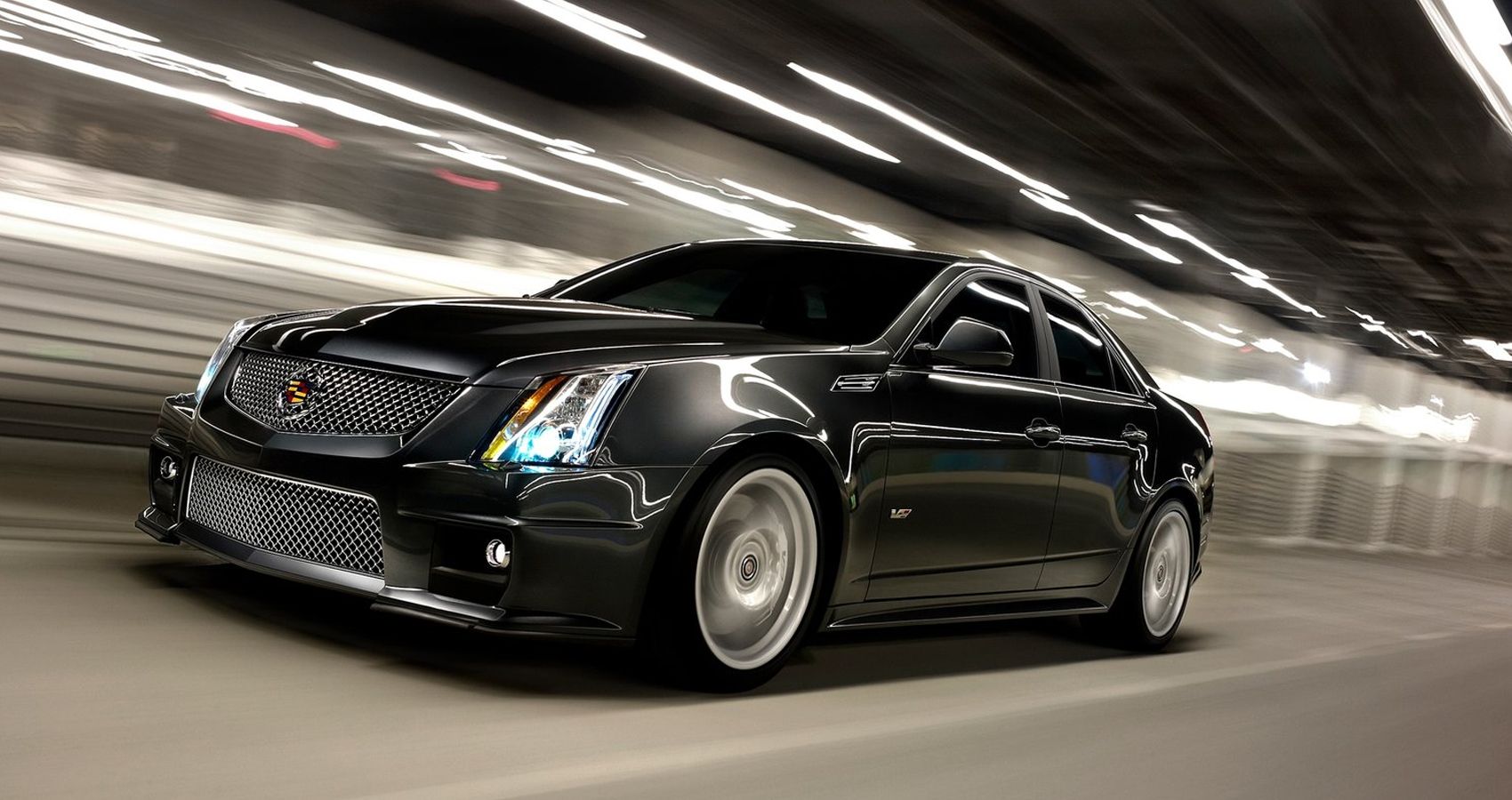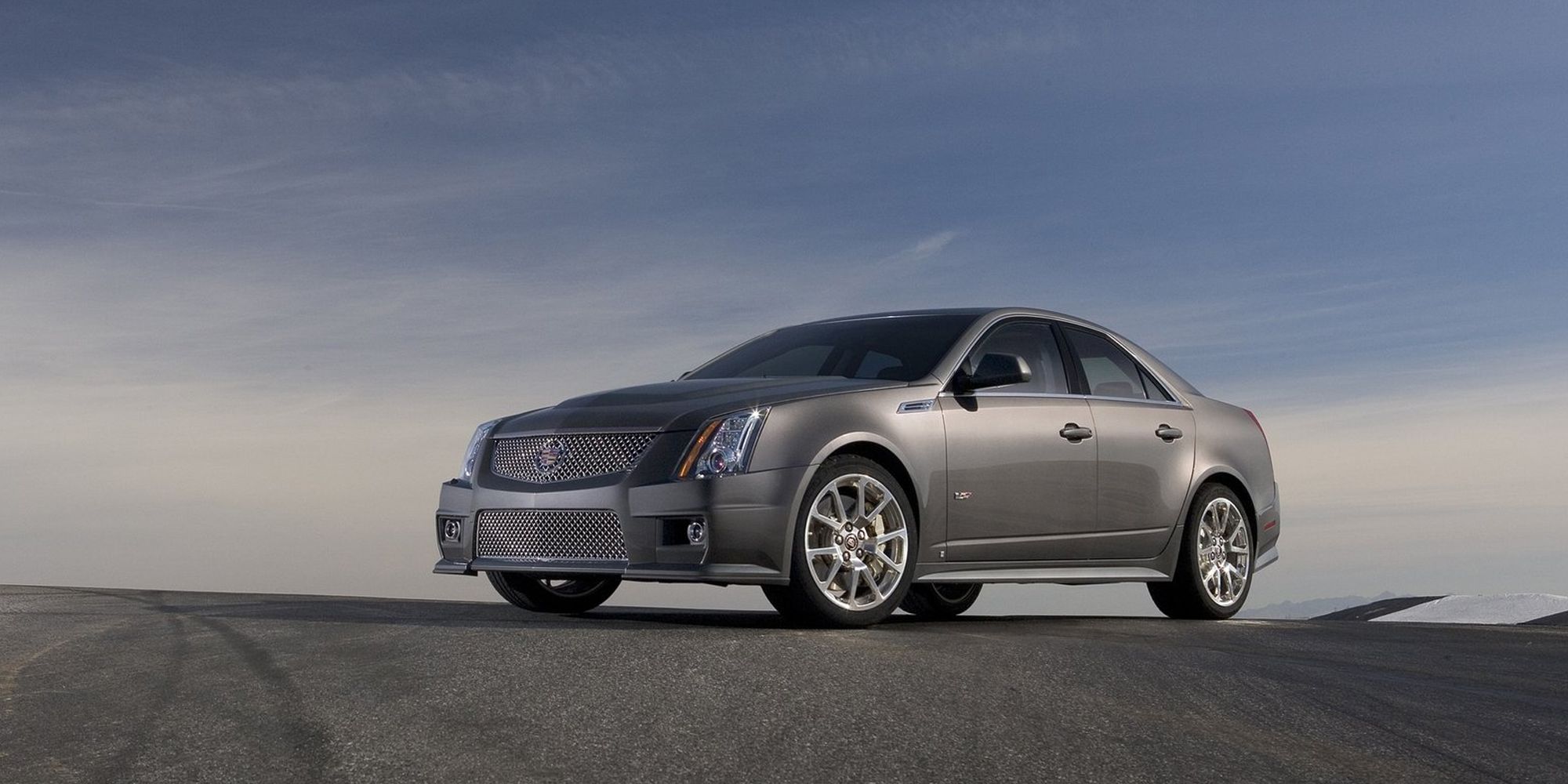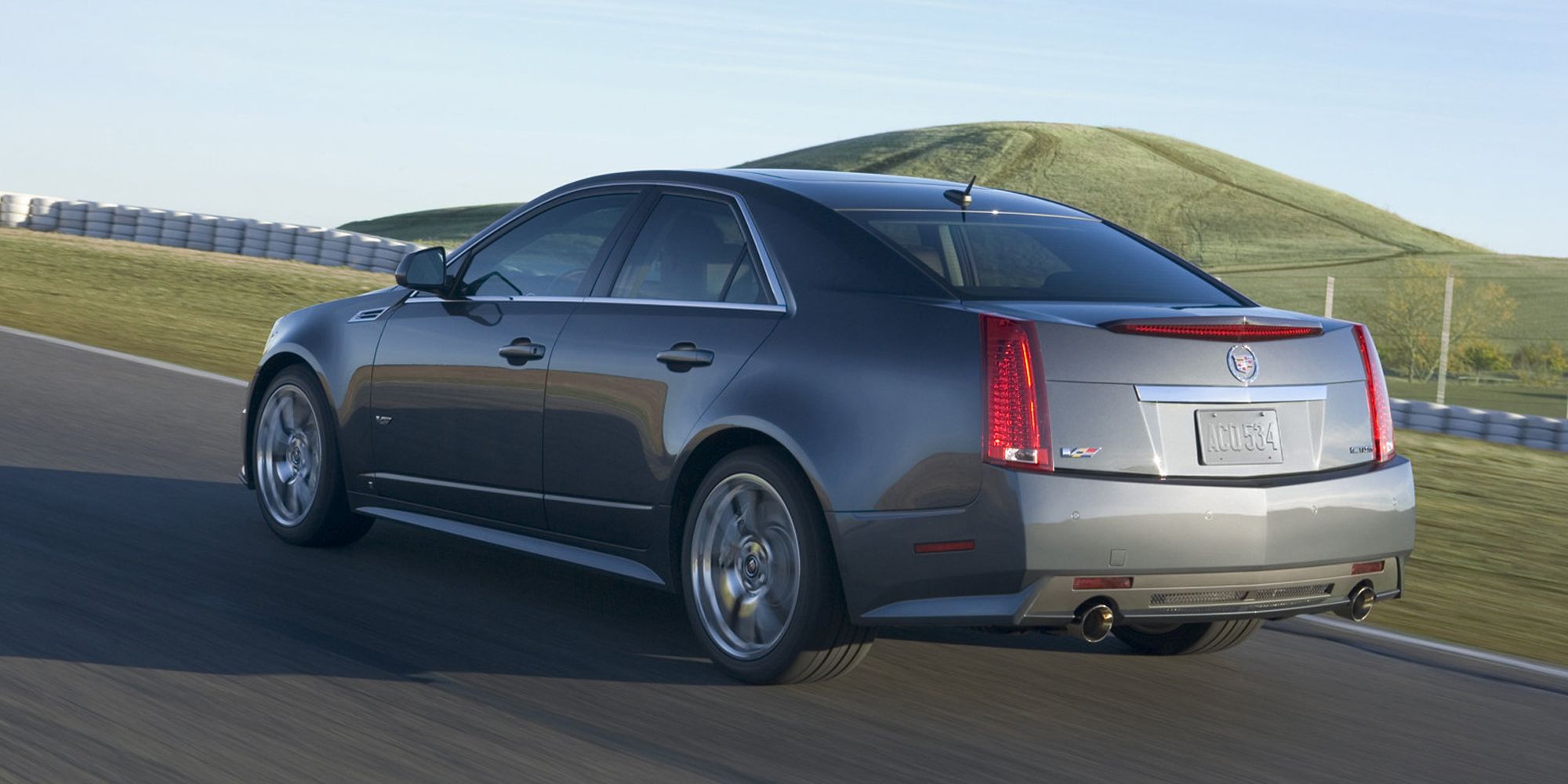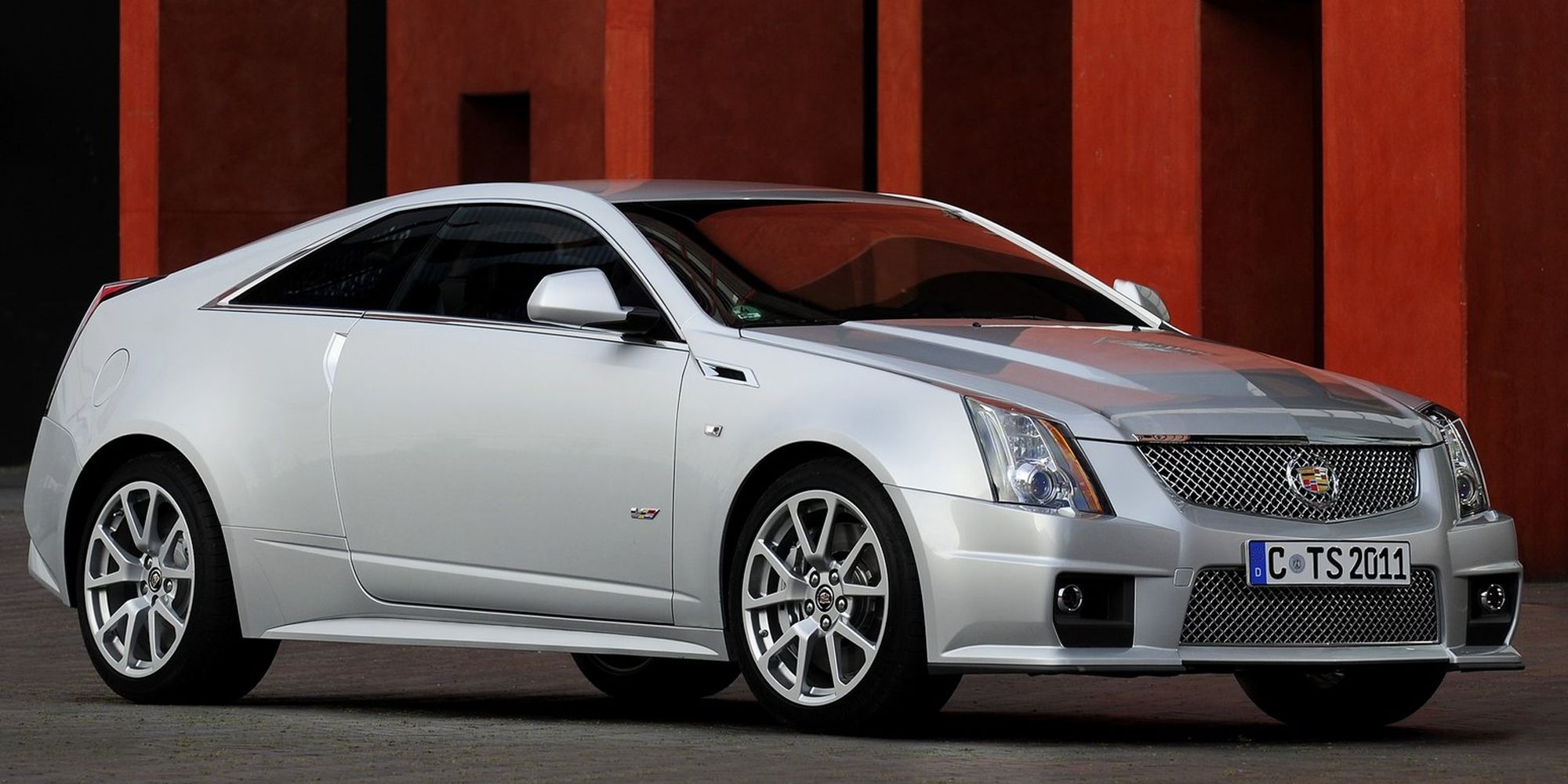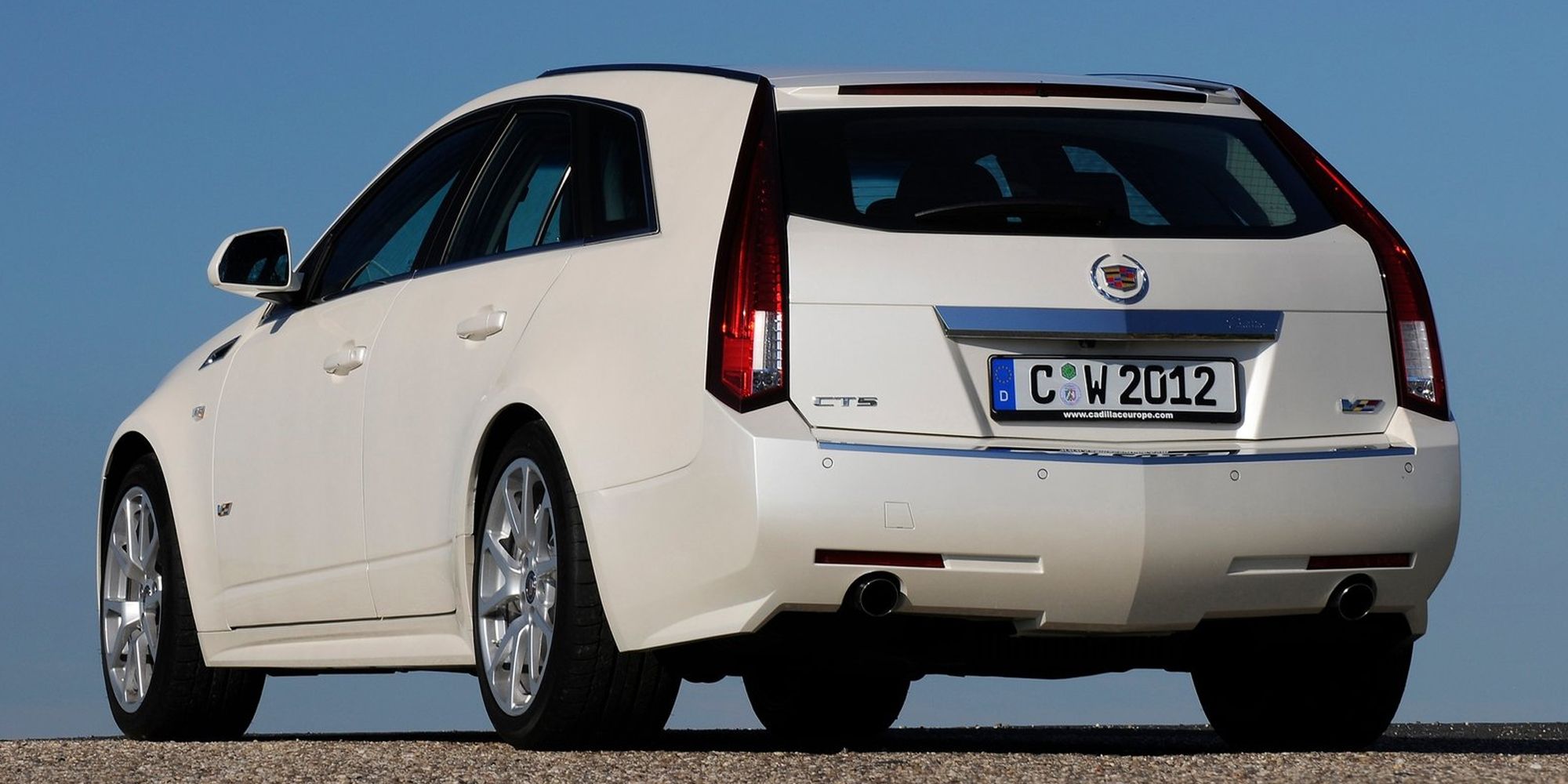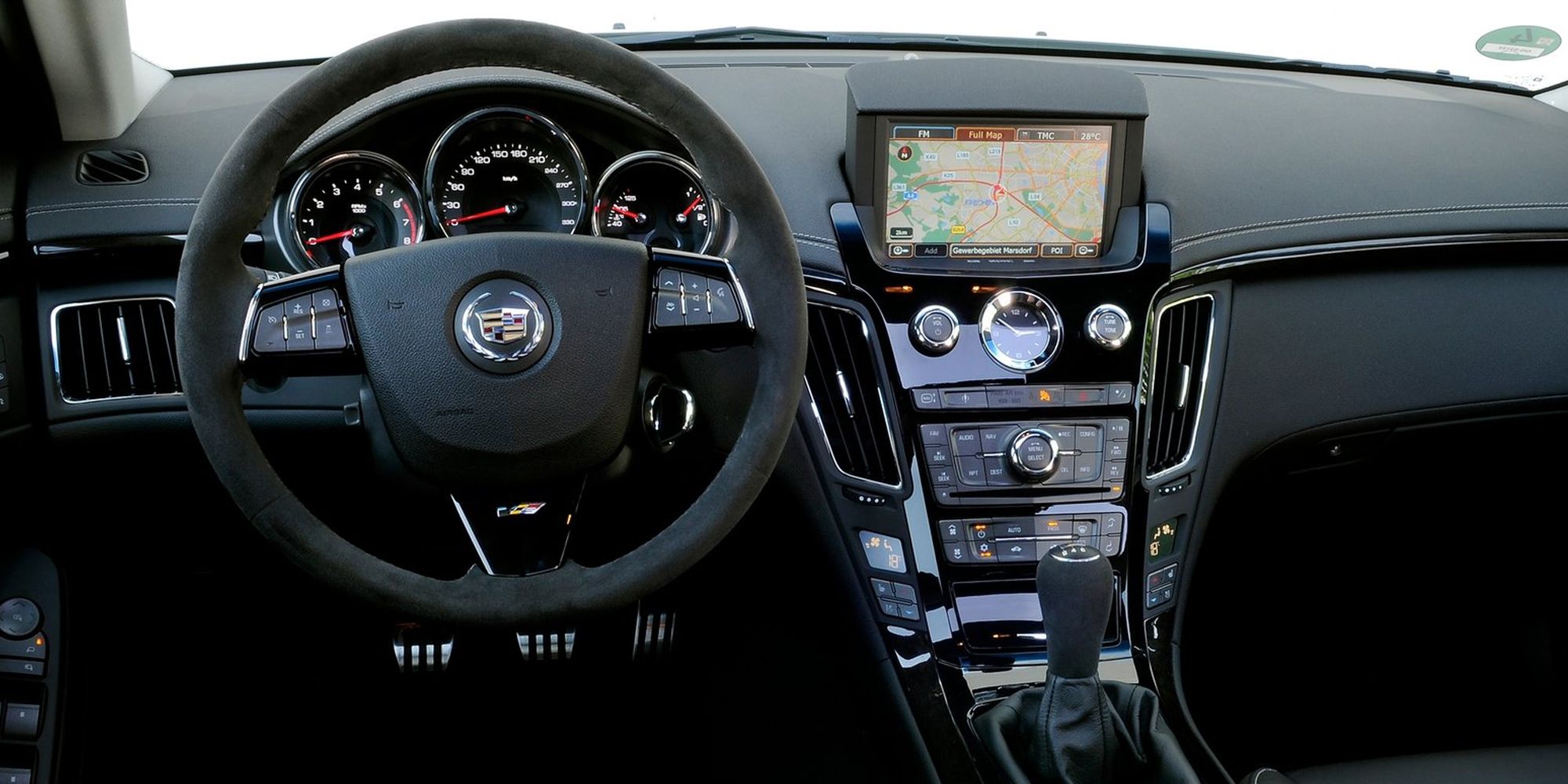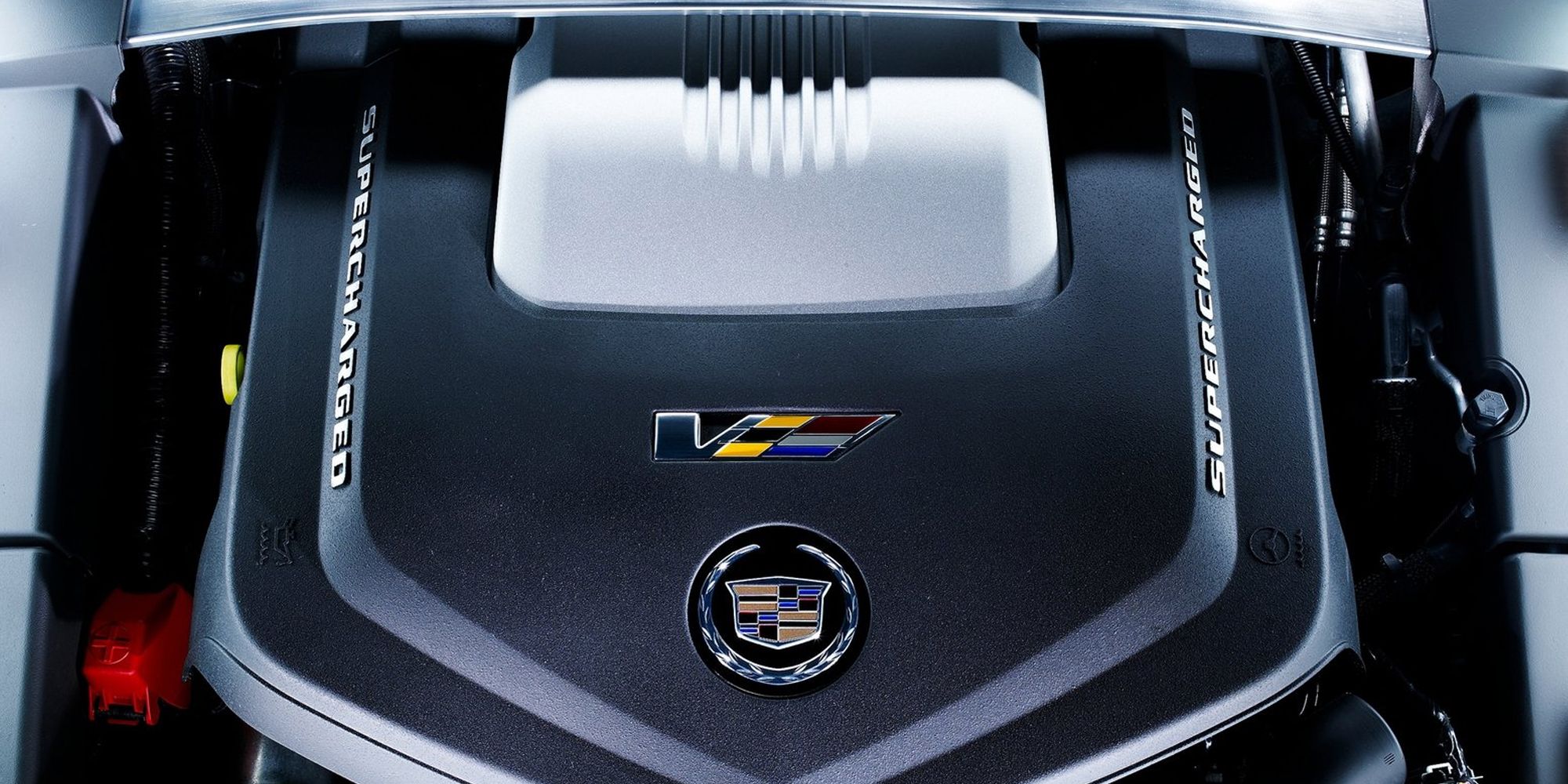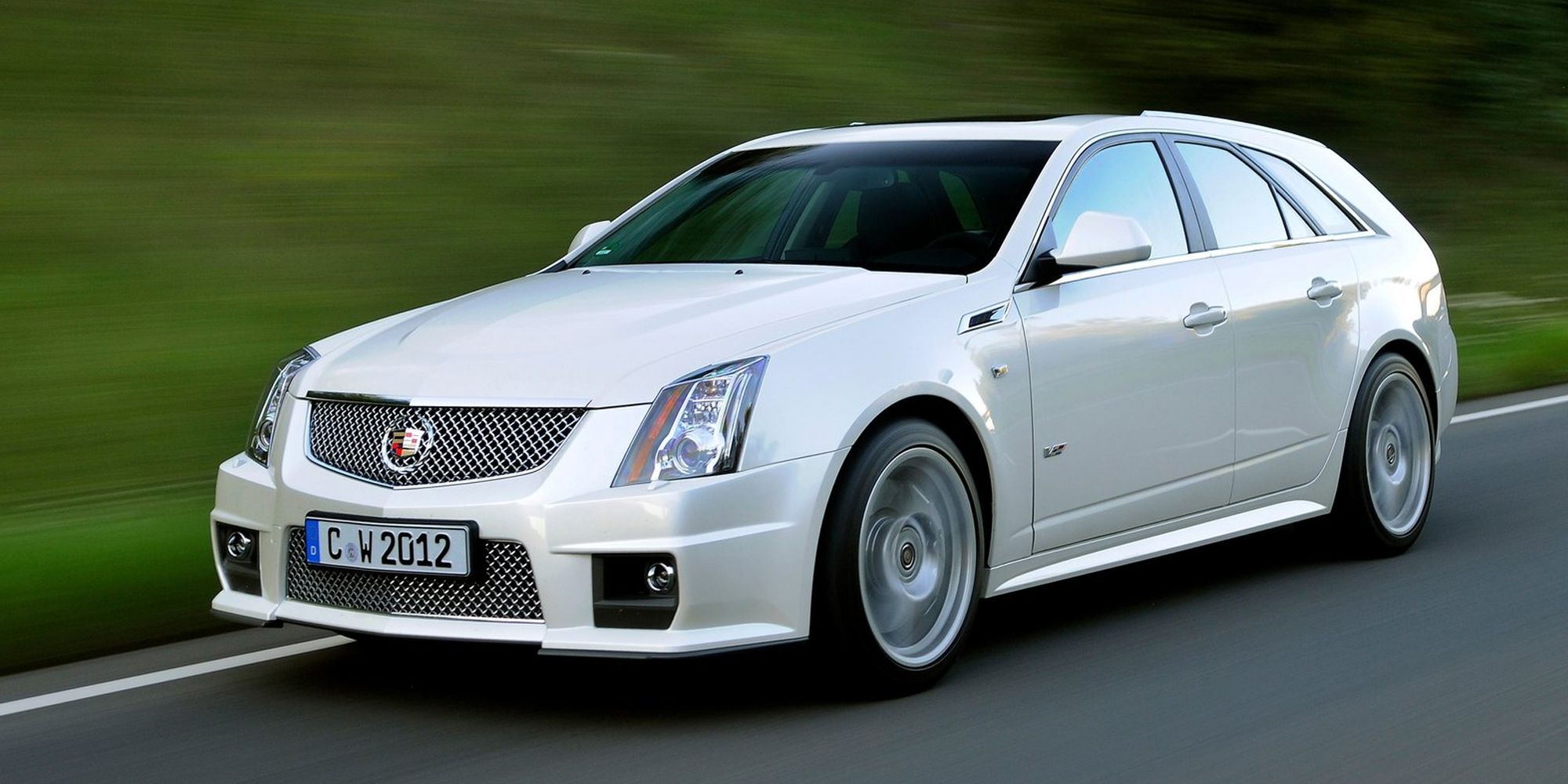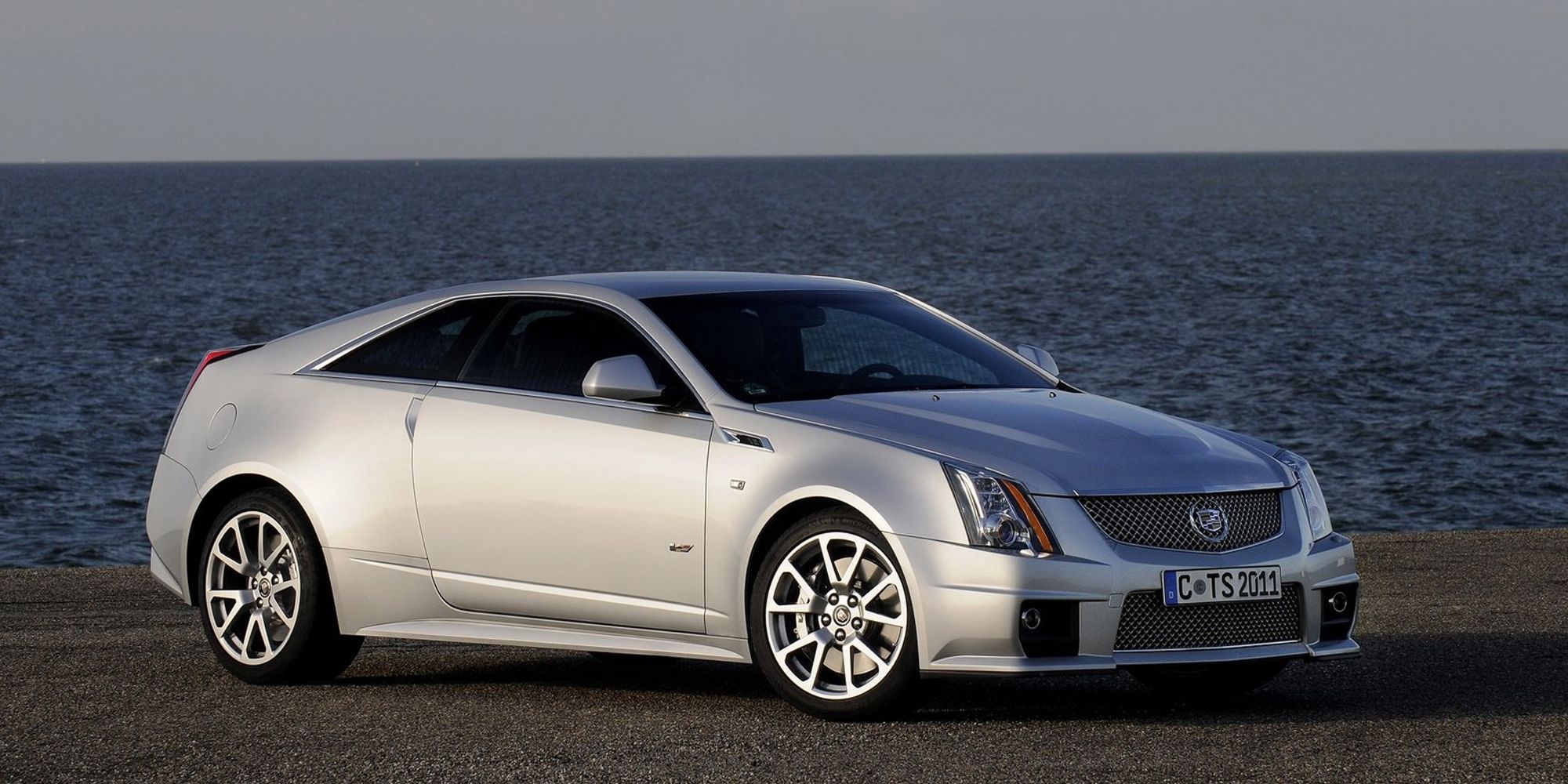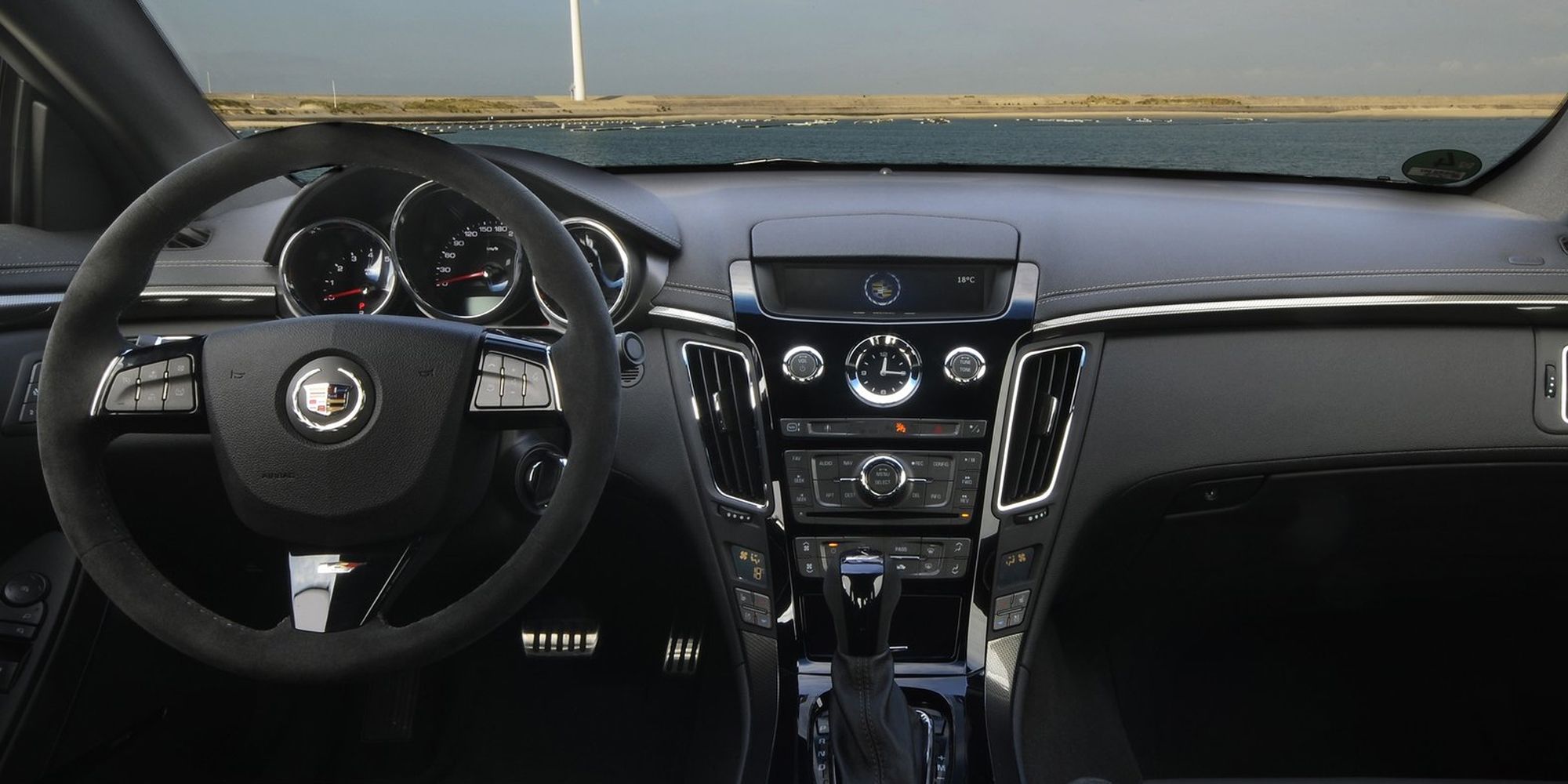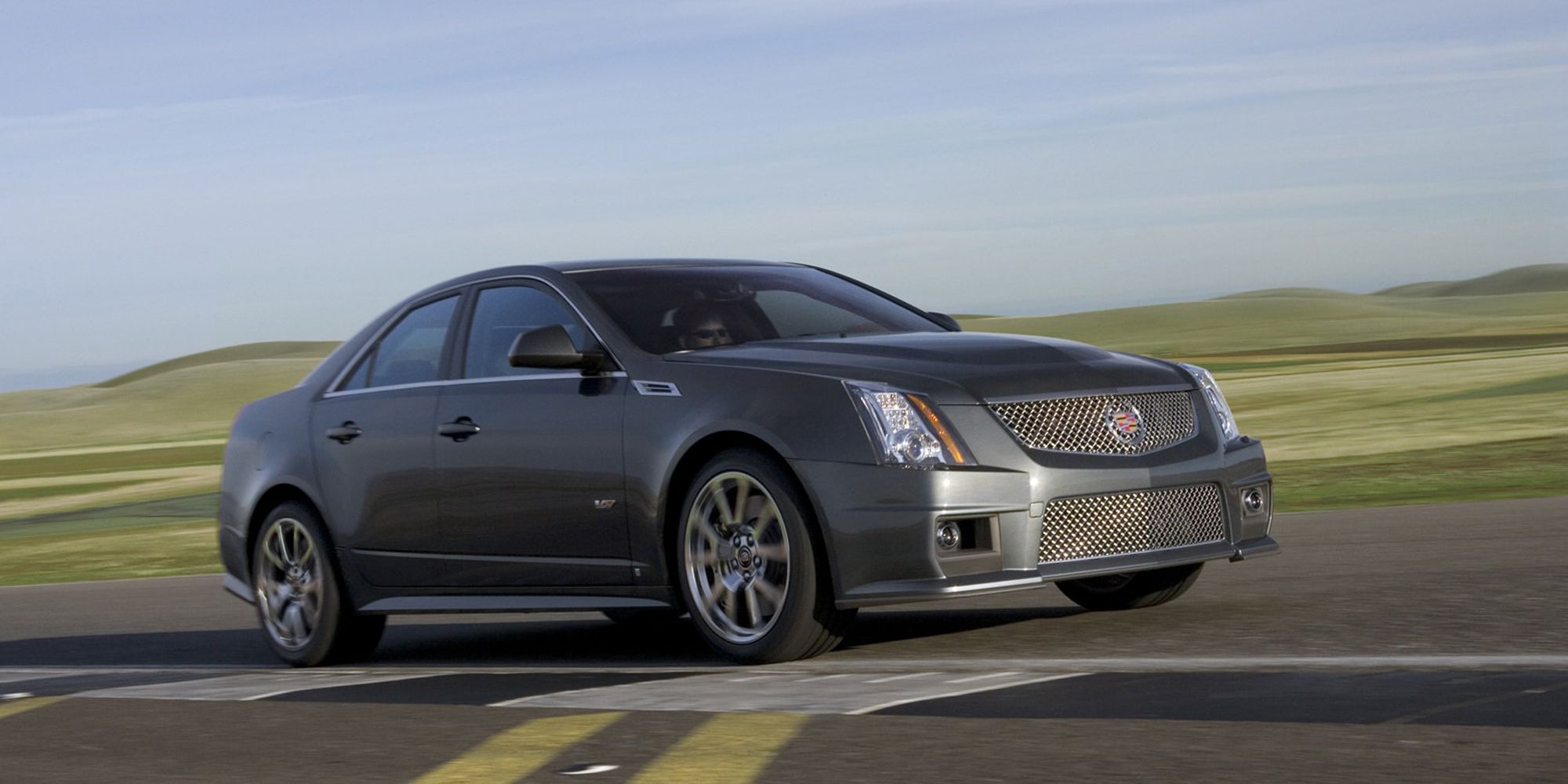For the biggest part of the 20th century, General Motors' luxury arm Cadillac had the reputation of being a brand for the elderly. This wasn't just an excuse to make fun of Cadillac, it was actually true. The most loyal Cadillac buyers were at the age of 65 and above. Entering into the 21st century, Cadillac got fed up with this reputation, and they decided to broaden their appeal.
As well as the Escalade becoming the star of every hip hop and R&B music video in the 2000s, their first performance car, the original CTS-V, was manual only. The CTS-V did actually manage to steal some clout from German performance sedans, and the second generation took that a step further.
2009-2014 Cadillac CTS-V
- Manual transmission
- Supercharged V8
- Available as a wagon
- Engine/Motor: 6.2-liter supercharged V8
- Horsepower: 556 hp
- Torque: 551 lb-ft
- Drivetrain: RWD
- Transmission: 6-speed manual/6-speed automatic
- Choice of body styles
- Fantastic, reliable engine
- World-beating handling
- Interior isn't the nicest
- Pretty heavy
- Automatic transmission is best avoided
Overview Of The CTS-V
Cadillac sold the second-generation CTS-V, obviously based on the second-generation CTS, from 2009 to 2014. In that time, Caddy offered it in three different body styles. The sedan was the most common, and there was also the rather suave coupe version, and then the rarest and possibly most desirable one, the Sport Wagon. Visually, the CTS-V differs from the regular CTS in a lot of ways.
There's a far more aggressive front bumper with large air intakes. Interestingly, there is no V badging on the front, unlike basically all of its competitors. On the side, there were some flared fenders, and unique Y-spoke alloy wheels, available in either regular silver, polished silver, or glossy black.
The rear looked different depending on the body style, but all three flavors of the CTS-V received giant dual exhausts to let the supercharged V8 breathe. The CTS-V competed with the likes of the sleeper BMW M5, the school commute-friendly Mercedes-Benz E63 AMG, the Jaguar XFR, and the Audi RS6.
Second Gen CTS-V Powertrain And Drivetrain
Under the hood and under a sea of sound-insulating plastics, we find a supercharged 6.2-liter LSA V8. This powertrain is very similar to the one found in the C6 Corvette ZR1, but the power output is slightly smaller. The CTS-V puts out 556 hp and 551 lb-ft of torque, which are healthy numbers even by today's standards. They were really healthy back in 2009, though, as the CTS-V had basically all of its rivals, bar the V10-powered Audi RS6, trumped on horsepower.
Cadillac offered the CTS-V either with a six-speed manual transmission or a six-speed automatic. The manual cars can do 0-60 mph in 4.3 seconds, whereas the automatics do it in 3.9 seconds. All versions top out at around 191 mph, which is seriously impressive, as most of this car's rivals had a 155 mph cap.
All CTS-V models were RWD, and they used GM's ingenious and extremely effective magnetorheological dampers, also known as MagneRide, making this a truly fantastic handling performance sedan. You should be careful though, as the CTS-V has so much power that it spins the wheels in first and second gear, and only hooks up in third if it's nice and toasty outside.
Second-Gen CTS-V Comfort And Quality
The interior of the CTS-V and, in fact, this generation CTS in general, is a bit of a mixed bag. For being a luxury car, there's a lot more that Cadillac could have done, but ultimately, it doesn't really feel as premium as it could, almost on par with the decidedly less premium Buick Regal/Opel Insignia. Even the center control stack looks similar between them. Even then, it's not a bad place to spend time, and it's way nicer than the first CTS and CTS-V. This generation CTS does get the never-gets-old motorized infotainment display, a fancy Alcantara steering wheel and sportier gauges. On manual cars, the shift lever stands out too.
Equipment levels are pretty good, as you get all the things you would expect, including cruise control, navigation, front and rear parking sensors, dual-zone climate control, heated and ventilated Recaro seats with 14-way adjustment, and a lot more.
Other than the supercharger recall, the CTS-V is amazingly reliable, and it shouldn't give you much to worry about there, either. It seats five passengers (the Coupe seats four in a 2+2 configuration), and boasts 13.7 cubic feet of trunk space in the Coupe and regular sedan, and 25.4 cubic feet in the Sport Wagon.
Second-Gen CTS-V Prices
It's honestly surprising, but the CTS-V remains a fantastic performance car bargain—sort of. The prices vary a lot depending on the body style and the transmission. According to Classic.com, the cheapest way to have a second gen CTS-V is a sedan with the automatic transmission, for around $33,000. If you want the unicorn of the second gen CTS-V family, you'll have the devil's own job finding a wagon with the manual transmission. If you do, expect to pay upwards of $73,000. That's a lot, but the other two with either transmission will satisfy the craving for a fast, luxurious, V8-powered super sedan, or super coupe. In case you're still debating, there are plenty of reasons to own a Cadillac CTS-V.

